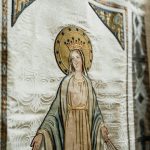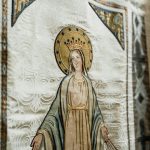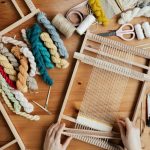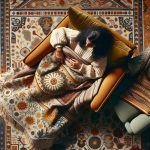When it comes to understanding the cost of quilts, it's like unraveling a complex tapestry of craftsmanship and artistry. From the intricate stitching that weaves together stories and traditions to the use of high-quality materials, there are numerous factors that contribute to the price of quilts.
As you delve into the world of quilting, you'll discover ten compelling reasons why quilts are indeed expensive. Whether it's the time-intensive handiwork or the personalized touch that reflects your unique style, each aspect adds value to these timeless pieces.
So, let's explore the craftsmanship, heritage, and artistry that make quilts not just a blanket, but a cherished investment.
Key Takeaways
- Quilts are expensive due to the use of quality materials such as premium cotton, silk, and wool, as well as the skilled labor and craftsmanship involved in their creation.
- The artistry and design of quilts, including unique artistic techniques, design inspiration, and careful selection of colors, fabrics, and patterns, contribute to their high cost.
- Longevity and durability are factors that add to the expense of quilts, with material selection, meticulous stitching techniques, and well-executed binding ensuring their longevity.
- Quilts are seen as an investment due to their potential value as heirloom pieces, their artistic and aesthetic value, and the appreciation in value they can experience over time.
Quality Materials
You'll find that quilts are expensive because they're made with high-quality materials that ensure durability and long-lasting beauty. Custom designs often require specific fabrics that are carefully selected to achieve the desired aesthetic and functionality. These materials, such as premium cotton, silk, or wool, contribute to the overall cost of the quilt.
Skilled labor is also a significant factor in the expense of quilts. Experienced quilters meticulously piece together intricate designs, ensuring precise measurements and flawless stitching. This level of craftsmanship requires years of practice and dedication, adding to the overall value of the quilt.
The combination of custom designs and skilled labor results in a product that isn't only visually stunning but also built to stand the test of time. The use of high-quality materials and the expertise of skilled artisans ensure that these quilts aren't only a work of art but also an investment in heirloom quality.
Therefore, while the initial cost may seem high, the longevity and beauty of a well-made quilt make it a worthwhile and lasting purchase.
Time-Intensive Craftsmanship
Crafting a quilt is a time-intensive process that requires meticulous attention to detail and a significant investment of labor. Through this painstaking process, each stitch is carefully placed, ensuring the quilt's structural integrity and visual appeal.
| Craftsmanship Skills | Time Investment |
|---|---|
| Precision | Hours of Handwork |
| Artistic Vision | Patience |
| Design Layout | Dedication |
| Color Coordination | Perseverance |
| Embellishment | Skill Refinement |
Craftsmanship skills are honed over years of practice, allowing quilters to create intricate designs with precision and artistic vision. The time investment in crafting a quilt is extensive, often involving hours of handwork, patience, dedication, perseverance, and continual refinement of skills. The design layout, color coordination, and embellishment further contribute to the meticulous craftsmanship that makes each quilt a unique piece of art. This level of attention to detail and time investment is a significant factor in the cost of quilts, as it reflects the expertise and dedication of the craftsperson.
Intricate Stitching and Patterns
Achieving intricate stitching and patterns in quilts requires precision and attention to detail throughout the entire crafting process. Intricate detailing involves using various stitching techniques such as appliqué, embroidery, and free-motion quilting. These techniques demand a high level of skill and expertise to execute with accuracy and finesse. Quilt makers must meticulously plan and execute unique patterns, considering design complexity and how it will complement the overall quilt. Each stitch and pattern must be carefully thought out to ensure cohesiveness and visual appeal.
The intricacy of stitching and patterns adds significant value to a quilt. It reflects the artisan's mastery and creativity, making each piece a work of art. Furthermore, the time and effort invested in perfecting these intricate details contribute to the overall cost of the quilt. Additionally, the materials required to achieve such detailing, such as specialized threads and needles, also add to the expense.
Ultimately, the combination of skill, time, and resources needed to create intricate stitching and patterns justifies the higher cost of quilts with these exceptional qualities.
Customization and Personalization
When you request a customized quilt, the unique design process and artisan skill required significantly impact the cost.
The time and effort involved in personalizing a quilt to your specifications also contribute to its overall expense.
These factors highlight the value of customization and the personal touch it adds to the quilt-making process.
Unique Design Process
By carefully considering your preferences and requirements, quilts undergo a unique design process that involves customization and personalization. This creative process allows for the use of unique techniques and the application of innovative ideas to bring your vision to life.
Here's what goes into the unique design process:
- Collaborative Planning: Designers work closely with you to understand your vision, color preferences, and any specific patterns or motifs you want to incorporate into the quilt.
- Tailored Fabric Selection: The selection of fabric is tailored to your preferences, ensuring that the quilt not only looks visually appealing but also feels exactly as you desire.
- Customized Embellishments: From hand-stitched embroidery to custom appliqué work, the quilt is adorned with personalized embellishments to add a special touch.
This personalized approach results in a one-of-a-kind quilt that reflects your individual style and requirements.
Artisan Skill and Time
To achieve the level of customization and personalization in quilts, artisans invest significant time and skill to bring your unique vision to life. Artisan techniques, such as hand appliqué, hand quilting, and intricate embroidery, require a high level of expertise and precision. Each stitch is carefully crafted to ensure that your quilt reflects your individuality.
The time management aspect is crucial, as artisans meticulously plan and execute every step of the customization process. From selecting the finest fabrics to meticulously piecing together intricate designs, the artisan skill and time invested in creating a personalized quilt contribute to its overall cost.
This attention to detail and dedication to bringing your vision to reality is a testament to the craftsmanship and artistry that goes into each personalized quilt.
Heritage and Tradition
When it comes to understanding the reasons behind the expense of quilts, it's important to consider the deep-rooted heritage and tradition associated with these textile creations.
The cultural significance and value placed on quilts as a form of artistic expression has been passed down through generations, contributing to their elevated worth.
Additionally, the intricate designs and time-intensive handcrafting process further showcase the dedication to preserving this rich tradition, ultimately adding to the overall cost of these cherished pieces.
Cultural Significance and Value
Quilts are expensive because of the deep cultural significance and value they hold, representing heritage and tradition passed down through generations. They aren't merely blankets; they encapsulate the history, stories, and artistic expressions of a particular community or family.
The intricate designs and patterns often reflect the cultural preservation of a specific group, making each quilt a unique piece of art. Additionally, the economic impact of quilting traditions can't be overlooked, as it provides livelihoods for many artisans and supports local economies.
Quilts serve as a tangible link to the past, honoring the craftsmanship and skills of previous generations. Their value goes beyond monetary worth, embodying the rich tapestry of cultural heritage and tradition.
Artistry and Intricate Designs
With the use of intricate designs and patterns, artisans skillfully weave heritage and tradition into each quilt, creating a tangible representation of cultural richness and artistic expression.
Artistic techniques such as appliqué, patchwork, and intricate embroidery play a pivotal role in the creation of these quilts, showcasing the artisans' mastery of their craft.
Design inspiration often stems from historical motifs, natural elements, and storytelling traditions, further elevating the complexity and significance of the quilts.
The intricate designs not only demonstrate the artisan's skill and creativity but also serve as a link to the rich cultural heritage and traditions passed down through generations.
Each quilt becomes a unique work of art, reflecting the artistry, dedication, and cultural significance that contribute to its elevated value in the quilting world.
Time-Intensive Handcrafting Process
Crafting each quilt is a labor-intensive process that demands meticulous attention to detail, dedication to preserving heritage, and a commitment to upholding traditional techniques. The time-intensive handcrafting process involved in quilt-making is a reflection of the deep-rooted heritage and tradition associated with this art form.
- Craftsmanship Techniques
- Quilting involves intricate stitching, appliqué, and embroidery techniques that require precision and skill.
- Heritage Preservation
- Quilting traditions are passed down through generations, preserving cultural and historical significance.
- Labor-Intensive Process
- Each quilt is meticulously handcrafted, consuming a significant amount of time and effort.
The laborious process of quilt-making is a testament to the dedication and mastery of craftsmanship techniques, ensuring that each quilt isn't only a work of art but also a symbol of heritage and tradition.
Limited Edition or One-Of-A-Kind
When you're looking for a high-quality quilt, limited edition or one-of-a-kind pieces are often worth the investment for their unique craftsmanship and attention to detail. These quilts are meticulously crafted by artisans who pour their expertise and creativity into each stitch, resulting in a truly exceptional piece of functional art. Limited edition or one-of-a-kind quilts are often the epitome of customization and artistry, making them highly sought after by collectors and those who appreciate fine textiles.
| Reasons for Limited Edition or One-Of-A-Kind Quilts | Description | Impact |
|---|---|---|
| Unique Craftsmanship | Each quilt is individually crafted with meticulous attention to detail, showcasing the highest level of artistry and skill. | Ensures that the quilt is a one-of-a-kind masterpiece, elevating its value and desirability. |
| Limited Edition Availability | Limited availability adds an element of exclusivity, making these quilts highly coveted and sought after. | Increases the prestige and value of the quilt, appealing to discerning collectors and enthusiasts. |
| Personalized Touch | These quilts often offer the opportunity for customization, allowing buyers to have a unique, personalized piece that reflects their individual style and preferences. | Provides a sense of ownership and connection, making the quilt even more cherished and valuable. |
Limited edition or one-of-a-kind quilts stand as a testament to the exceptional skill and artistry of their creators, making them a worthwhile investment for those who appreciate the finest craftsmanship and desire a truly unique textile masterpiece.
Professional Quilting Services
When you hire professional quilting services, you're paying for the skill and time it takes to create a high-quality quilt.
Additionally, the cost of specialized equipment used by professional quilters contributes to the overall expense.
These factors combined result in the higher pricing of quilts that have been professionally quilted.
Skill and Time
By selecting professional quilting services, you're ensuring that your quilt receives the skill and time it deserves, guaranteeing a high-quality finished product.
Professional quilters possess expertise in various quilting techniques, enabling them to execute intricate designs and patterns with precision.
The design process undertaken by professional quilters involves meticulous planning and attention to detail, ensuring that the quilt meets your specific requirements.
Using professional quilting services also saves you valuable time, allowing you to focus on other aspects of your life while skilled artisans dedicate themselves to creating your quilt masterpiece.
Ultimately, the investment in professional quilting services translates into a stunning, durable, and unique quilt that reflects the dedication and expertise poured into every stitch.
Specialized Equipment Costs
To produce high-quality quilts, professional quilters rely on specialized equipment. This equipment, such as longarm quilting machines, is a significant investment, often costing thousands of dollars. These machines are designed to handle large quilts and offer features that allow for intricate and detailed quilting patterns.
In addition to the initial cost of the equipment, the maintenance of this specialized equipment is crucial. Regular maintenance ensures optimal performance and longevity, but it also adds to the overall expense of producing high-quality quilts.
Furthermore, professional quilters undergo specialized training to operate these machines effectively. This training not only ensures that they can use the equipment efficiently but also allows them to create complex quilting patterns with precision.
The combination of high-quality equipment, ongoing maintenance, and specialized training results in a higher cost for professional quilting services. However, it is these factors that guarantee exceptional quality and precision in the finished quilts.
High Demand and Limited Supply
You'll find that quilts are expensive due to the high demand and limited supply driving up prices. This economic impact is influenced by market trends and consumer behavior, particularly in the luxury market.
- Rarity: Limited supply of high-quality quilts contributes to their expense, as skilled artisans can only produce a finite number within a given timeframe.
- Craftsmanship: The intricate work and time-intensive nature of quilt-making results in a limited output, further exacerbating the scarcity of these items.
- Consumer Preference: High demand for quilts, driven by discerning consumers seeking unique, handcrafted textiles, intensifies competition and raises prices.
The intersection of these factors leads to an environment where the demand for artisanal quilts outstrips the available supply, resulting in higher prices. As consumer preferences continue to trend towards exclusive, bespoke items, the economic principle of supply and demand dictates that the cost of quilts will remain high.
This confluence of market dynamics and consumer behavior underscores the enduring value and expense of quilts in today's marketplace.
Artistic and Aesthetic Value
Considering the intricate designs and meticulous handiwork involved in creating quilts, appreciating their artistic and aesthetic value adds depth to understanding why they command high prices. Quilts aren't merely functional items; they're pieces of art that require a high level of artistic inspiration and design appreciation.
The creativity and skill that go into designing and crafting a quilt make it a unique and valuable work of art. Artistic inspiration plays a crucial role in the creation of quilts. Quilters often draw inspiration from various sources such as nature, historical patterns, cultural motifs, and personal experiences. This inspiration is translated into intricate designs that reflect individual creativity and vision. Each quilt tells a story through its design, capturing the quilter's artistic expression and creativity.
Design appreciation is another essential aspect of the artistic and aesthetic value of quilts. The careful selection of colors, fabrics, and patterns, as well as the precise arrangement of quilt blocks, contribute to the overall design appeal. The attention to detail and the harmonious blend of different elements elevate quilts to a level of artistic significance, making them not only functional but also visually captivating pieces of art.
Longevity and Durability
For a quilt that withstands the test of time while maintaining its quality, you'll want to select durable materials and employ meticulous stitching techniques. Longevity and durability are key factors in the investment value of a quilt, especially for those seeking heirloom potential.
When considering these aspects, keep the following in mind:
- Material Selection: Opt for high-quality, durable fabrics that can endure regular use and washing without compromising their integrity. Fabrics such as high thread count cotton, silk, or wool are known for their longevity and resilience.
- Stitching Techniques: Meticulous stitching, such as hand-quilting or intricate machine quilting, contributes to the overall durability of the quilt. Properly secured layers and reinforced seams are essential for withstanding the test of time.
- Binding and Finishing: The binding plays a crucial role in preserving the quilt's edges and preventing fraying. A well-executed binding enhances the quilt's durability and ensures that it remains intact for generations to come.
Frequently Asked Questions
How Can I Learn to Make My Own Quilts?
To learn to make your own quilts, start by exploring quilt patterns and fabric selection. Join quilting classes or workshops, watch online tutorials, and practice regularly. Developing your skills and gaining experience will help you master the art of quilting.
Are There Any Health Benefits to Using Quilts?
Using quilts can provide health benefits such as improved comfort, warmth, relaxation, and better sleep quality. The weight and warmth of a quilt can also aid in stress relief and promote a sense of calm.
What Are Some Common Misconceptions About Quilt Pricing?
Misconceptions about quilt pricing often overlook the high-quality materials, labor, and craftsmanship that go into handmade quilts. Many fail to recognize the value of these factors, contributing to the misconception of their pricing.
Can Quilts Be Considered a Form of Art?
Yes, quilts can be considered a form of art. Quilt appreciation involves recognizing the intricate designs and artistic expression that goes into creating them. Their combination of functionality and visual appeal makes them a unique art form.
What Are Some Unique Ways to Display and Care for Quilts?
To display quilts, consider quilt hanging methods such as decorative quilt racks or wall-mounted quilt hangers. For quilt storage, use acid-free tissue paper and a cool, dry area. Avoid folding to prevent creases and consider rolling for long-term storage.
- The Ultimate Guide to Spunbond Nonwoven Fabrics - July 11, 2025
- What Is Spunlace Nonwoven and Where Is It Used? - July 11, 2025
- A Technical Guide to Meltblown Nonwoven Manufacturing - July 11, 2025







